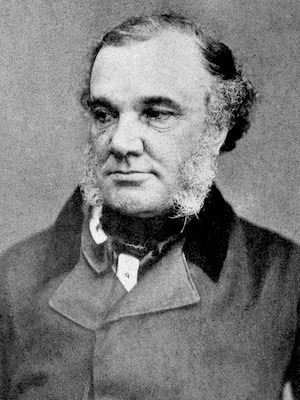Thomas Addison
Thomas Addison (1793 – 1860) was an English physician.
A master of clinical observation and revered in medical history for his discoveries of Addison’s Disease 1855 and Addison’s Anaemia 1849. Sadly, he never saw the fame or recognition he deserved during his lifetime.
His teaching ability contributed to the fame of Guy’s Hospital as a school of medicine. Retiring from his work he revealed to his students:
…a considerable breakdown in my health has scared me from the anxieties, responsibilities and excitement of my profession
Biography
- Born April 1793 (?1795) in Long Benton, near Newcastle. Educated at Newcastle grammar school.
- 1815 – Graduated with a doctor’s degree in medicine from the university of Edinburgh aged 22. His thesis was “de siphilide” written in latin. He became house surgeon to Lock Hospital, London, and worked with the great dermatologist, Bateman.
- 1820 – at the age of 27 became associated with Guy’s hospital, probably only as a student
- 1824 – appointed physician assistant at Guys hospital at the age of 31
- 1827 – lectured on Materia Medica at the same institution
- 1829 – wrote his first book in English on the action of poisons on the living body
- 1837 – age 42 he became physician to Guy’s hospital and joint lecturer on medicine with Dr Richard Bright. First used static electricity in treatment of spasmodic and convulsive illnesses.
- 1839 – at the age of 46 he described appendicitis
- 1849 – Described pernicious anaemia and disease of suprarenal capsules (melasma suprarenale or Addison disease), in a paper before the south London’s medical society
- 1860 – died at the age of 67 he committed suicide shortly after retiring. He was buried in Lauercost Abbey, Cumberland.
Medical Eponyms
Addison’s anemia (1849)
Addison’s anaemia – otherwise known as pernicious anaemia occurs when the body cannot absorb enough vitamin B12, leading to the body’s inability to produce enough red blood cells. This form of anaemia was not fully understood in Addison’s lifetime, his description of “idiopathic anaemia” seen in the Medical Gazette in 1849:
Major Publications
- Norgan J, Addison T. An essay on the operation of poisonous agents upon the living body. 1829
- Addison T. Observations on the disorders of females connected with uterine irritation. 1830
- Bright R, Addison T. Elements of the practice of medicine. 1839
- Addison T. Anaemia – Disease of the suprarenal capsule. London Medical Gazette, 1849; 43(NS 8): 517-518. [Addison’s disease]
- Addison T, Gull W. On certain affection of the skin, vitiligoidea: (α) plana, (β) tuberosa. Guy’s Hospital Reports, 1851; II(7): 265-272.
- Addison T. On the keloid of Alibert, and on true keloid. Medico-Chirurgical Transactions, 1854; 37: 27-47. [Alibert’s disease; Addison described two forms of keloid, ‘false keloid’ as described by Alibert, and ‘true keloid’ later termed morphea, or Addison’s keloid ]
- Addison T. On the constitutional and local effects of disease of the supra-renal capsules. 1855 [Addison’s disease]
Controversies
Date of birth 1793, 1795
References
- Greenhow EH. On Addison’s disease: clinical lectures on Addison’s disease and a report on diseases of the supra-renal capsules. 1866
- A collection of the published writings of Thomas Addison. New Sydenham Society. 1868; 36
- Biography and Classic paper reprint: Thomas Addison. Medical Classics, 1937; 2: 244-277.
- Zakon SJ. The centenary of Thomas Addison (1793-1860). His contribution to dermatology. Arch Dermatol. 1961; 83: 934‐935.
- White IR, MacDonald DM. Thomas Addison, M.D. First dermatologist at Guy’s Hospital. J Am Acad Dermatol. 1982;6(3):426‐430.
- Pearce JM. Thomas Addison (1793-1860). J R Soc Med. 2004;97(6):297‐300.
- Jeffcoate W. Thomas Addison: one of the three “giants” of Guy’s Hospital. Lancet. 2005; 365: 1989-1990.
- Løvås K, Husebye ES. Addison’s disease. Lancet. 2005; 365(9476): 2058‐2061.
- Fresquet JL. Addison, Thomas (1793-1860). Historia de la Medicina
- Bibliography. Thomas Addison (1795 – 1860). World Cat Identities

